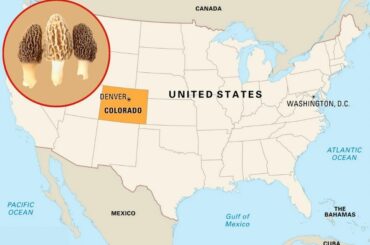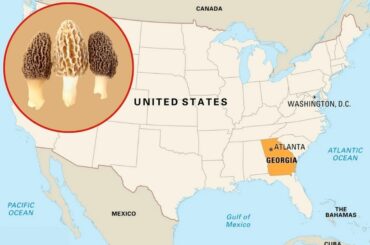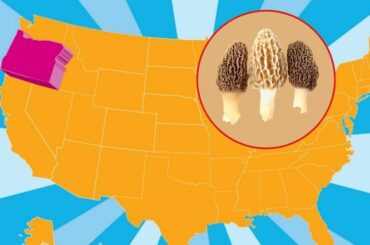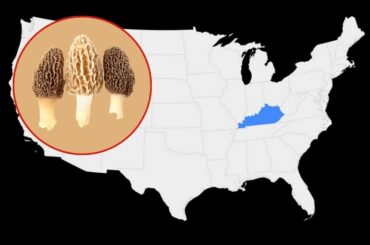Mushroom/mycelium bruising or bruised mycelium is mainly seen in mushroom varieties that contain psilocybin. But not all mushrooms that contain compound psilocybin are prone to bruising. Bruising can also be seen in a few non-psilocybin mushrooms as well.
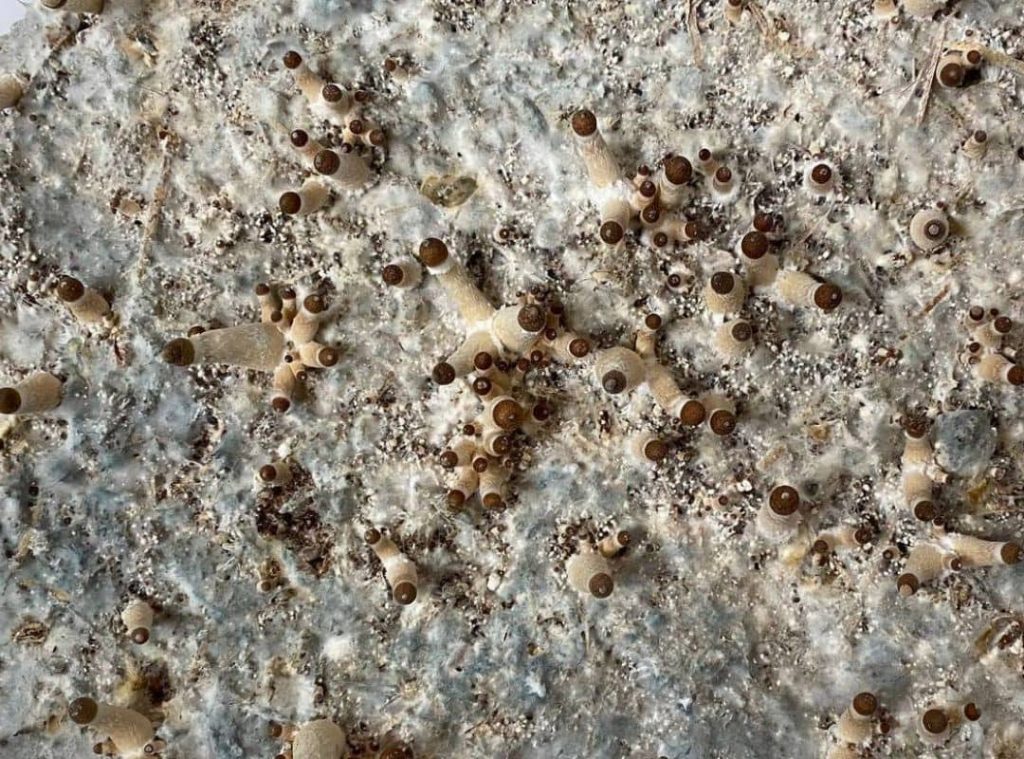
What causes mycelium bruising?
Contents
- 1 What causes mycelium bruising?
- 2 What does bruised mycelium look like?
- 3 Will bruised mycelium fruit?
- 4 Does bruised mycelium recover?
- 5 Is bruised mycelium bad?
- 6 Mycelium bruising from misting
- 7 Mold or bruised mycelium
- 8 Trich vs bruising
- 9 Q-tip test/ Swab test
- 10 How to treat a Trich infection
- 11 Bruised mycelium cakes
- 12 Recently asked questions
- 13 Conclusion
The exact cause for mycelium bruising is not yet well studied. Mushroom mycelium is believed to get bruised when exposed to oxygen during rough handling or any such damage that caused the mycelium to oxidize. This could happen even when the mycelium-covered substrate grains get pressed against the sides of growth bags, tubs, or jars in which the mycelium is grown. But a study done in 1967 found out that exposure to oxygen is not necessary for the mycelium or the mushroom to get bruised.
Another cause of mycelium bruising is believed to be the presence of a metal ion like copper in the mycelium. This metal ion is believed to be associated with a compound that is produced by an enzyme in some mushrooms.
What does bruised mycelium look like?
Bruised mycelium has a greenish tinge. This often looks like Trichoderma contamination, a bluish green fuzz-like growth, which is a common infection in mushroom cultivations.
Will bruised mycelium fruit?
Unfortunately, if the mycelium is extremely damaged due to bruising, those areas will not produce fruiting bodies.
Does bruised mycelium recover?
Unfortunately, if the mycelium is damaged completely due to bruising, those areas will not continue to grow or produce fruiting bodies. But the areas in the mycelium which are not damaged, could still grow and produce mushrooms.
Is bruised mycelium bad?
Bruising is not an infection, therefore the parts of the mycelium which are not damaged can still be producing fruiting bodies which can be consumed. But the bruised parts of the mycelium will not produce mushrooms.
Mycelium bruising from misting
Bruising does not necessarily happen as a direct effect of misting. It is rather an effect that occurs due to the lack of it. Misting produces a temporary state of extreme hydration for which the mycelium responds by additional growth. When the water supplied from the misting gets evaporated, the new growth dries out and gets bruised. This happens mostly with mushroom cakes. Although cakes are excellent for mushroom cultivation, they give out a lot of exposure to mycelium. As a result, cakes dry out quickly and easily.
You need to mist the surface of the cakes regularly to avoid evaporation from the exposed surfaces. You can also place your cakes near a humidifier to make sure the cakes are adequately moistened.
Mold or bruised mycelium
Mold in mushrooms often can look like green fuzz which is commonly caused by the fungus Trichoderma. Other types of molding on mushrooms can look like brown, black, green, orange, or pink stains or patches. Bruising is mostly seen as bluish-green patches on the mycelium. Therefore, identifying Trichoderma contamination and bruising can be a little difficult for a beginner’s level mushroom grower.
Trich vs bruising
Mycelium bruising looks identical to common contamination in mushroom cultivations; that is Trichoderma infection. Trichoderma or Trich infection in mushroom growth bags looks like green fuzz. This is commonly caused by the fungi which belong to the Trichoderma family.
Trich infection grows rapidly in circular colonies. In the beginning, the mold looks grayish and diffused but later turns greenish as the mycelium starts to produce spores. If you are diligent, you may be able to identify a Trich contamination at these early stages. Bruised mycelium will appear bluish without a gradual color development. In some mushrooms, the bruising can appear blue-green and even brown in some cases.
The color of the bruising depends on the type of compound (Psilocybin, psilocin), oxidative power of the environment and the concentration of the compound present in the mycelium. Still identifying the difference between these two in real mushroom cultivation could be a little tricky. Therefore some mushroom growers have come up with simple tests to determine which causes the bluing of the mycelium out of these two.
Q-tip test/ Swab test
There is no scientific background for the Q-tip test yet. But this test is very popular and often recommended by fellow mushroom enthusiasts on internet platforms.
The Q-tip test or swab test can be used to determine whether your mycelium is just bruised or contaminated with Trich. The test is based on the fact that Trich spores are very sticky and would be stuck on any surface that comes into contact. To do this you have to simply take a clean white cotton ball or a fresh Q-tip and swipe it across the infection. If your cotton swab rubs the blue color onto it, it is highly likely that you are looking at a Trich contamination. If your cotton swab comes out clean without any color on it, your mycelium may be simply bruised.
How to treat a Trich infection
Mushroom cultivation contaminated with Trich can still be saved, if the infection is isolated and treated early. Trichoderma species thrive in acidic conditions. Therefore, the infected area should be covered with salt, sodium hypochlorite, or sodium bicarbonate to increase the pH and inhibit further growth.
If you use salt, it also makes the growth medium uninhabitable for fungal growth. It is important that you recognize and treat the contamination as early as possible. This will give you enough time to deal with the contamination before it produces spores. If the Trich contamination has spread widely in the substrate, you can also cut off the infected area and discard it completely.
Bruised mycelium cakes
Bruising happens when physical damage is caused to the mycelium. This could happen even when the mycelium-covered substrate gets pressed against the sides of growth bags, tubs, or jars in which the mycelium is grown.
Recently asked questions
What does contaminated mycelium look like?
The most common type of contamination in mushrooms can look like green fuzz. This is commonly caused by the fungi which belong to the Trichoderma family. Other types of molding on mushroom growth bags can look like brown, black, green, orange, or pink stains or patches.
If these patches are small, you should isolate the bag and the mycelium will take care of the contamination by itself and continue to grow normally. Contamination occurs due to poor sterile conditions when preparing the substrate. If the molding spots are small, you should isolate the bag and the mushroom mycelium will take care of the contamination by itself and will continue to grow normally. But if the molding has spread more than 20%, it is better to remove the bag completely.
Can mycelium be black?
Common edible mushroom mycelium does not normally take black color. Some varieties could have brownish or whitish gray mycelium. The black color could most probably be caused by an infectious mold.
Aspergillus sp. infections on edible mushroom mycelium often have an appearance of a green (Aspergillus clavatus, Aspergillus fumigatus) or black mold (Aspergillus niger). Aspergillus mycelium at the beginning can be light gray in color with an appearance similar to mushroom mycelium. Sometimes Aspergillus forms ring-shaped colonies of dense mycelium at the edge. They can be recognized by their inherent musty, oily smell.
It is important to be mindful of the fact that some Aspergillus sp. are toxic and can have adverse effects when consumed. Therefore, it is essential to follow the recommended techniques and times for sterilizing the substrates.
Why is my mycelium turning green?
Healthy mycelium of edible mushrooms commonly has a whitish or grayish color. Any deviation from this could hint at an infection due to a foreign mold. Both Trichoderma (aka Trich) and Aspergillus contamination form greenish color mold on substrates.
Aspergillus clavatus and Aspergillus fumigatus are some species that form greenish molds. Trichoderma, in contrast, is a very aggressive variety of fungi and is very common contamination encountered in mushroom cultivations. These contaminations often start as light gray molds. When the contamination grows and sporulates, they turn greenish and take a fuzzy appearance. As a result, the contamination cannot be identified separately from the mushroom mycelium before the sporulation.
Conclusion
The exact cause for mycelium bruising is not yet well studied. Mushroom mycelium is believed to get bruised when exposed to oxygen during rough handling or any such damage that caused the mycelium to oxidize. Bruised mycelium appears greenish and is often confused with Trichoderma contamination, which has a bluish-green fuzz-like appearance. A Q-tip test or Swab test can be used to identify between these two. Although bruising is not an infection, it hinders mushroom growth. The parts of the mycelium which are damaged by the bruising can no longer produce fruiting bodies. But the parts which are not excessively damaged can still be producing fruiting bodies which can be consumed.
Read Next : Blue Oyster Mushroom Pinning (Explained!)

